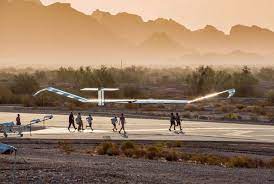
Breaking News
 Christmas Truce of 1914, World War I - For Sharing, For Peace
Christmas Truce of 1914, World War I - For Sharing, For Peace
 The Roots of Collectivist Thinking
The Roots of Collectivist Thinking
 What Would Happen if a Major Bank Collapsed Tomorrow?
What Would Happen if a Major Bank Collapsed Tomorrow?
Top Tech News
 Travel gadget promises to dry and iron your clothes – totally hands-free
Travel gadget promises to dry and iron your clothes – totally hands-free
 Perfect Aircrete, Kitchen Ingredients.
Perfect Aircrete, Kitchen Ingredients.
 Futuristic pixel-raising display lets you feel what's onscreen
Futuristic pixel-raising display lets you feel what's onscreen
 Cutting-Edge Facility Generates Pure Water and Hydrogen Fuel from Seawater for Mere Pennies
Cutting-Edge Facility Generates Pure Water and Hydrogen Fuel from Seawater for Mere Pennies
 This tiny dev board is packed with features for ambitious makers
This tiny dev board is packed with features for ambitious makers
 Scientists Discover Gel to Regrow Tooth Enamel
Scientists Discover Gel to Regrow Tooth Enamel
 Vitamin C and Dandelion Root Killing Cancer Cells -- as Former CDC Director Calls for COVID-19...
Vitamin C and Dandelion Root Killing Cancer Cells -- as Former CDC Director Calls for COVID-19...
 Galactic Brain: US firm plans space-based data centers, power grid to challenge China
Galactic Brain: US firm plans space-based data centers, power grid to challenge China
 A microbial cleanup for glyphosate just earned a patent. Here's why that matters
A microbial cleanup for glyphosate just earned a patent. Here's why that matters
 Japan Breaks Internet Speed Record with 5 Million Times Faster Data Transfer
Japan Breaks Internet Speed Record with 5 Million Times Faster Data Transfer
Airbus Solar Powered Aircraft Can Fly for 18 Days And Replace 250 Cell Towers

The first stratospheric UAS of its kind, Zephyr provides a persistent and adaptable solution, unlike other unmanned aircraft. Its persistence enables a capability of flying continuously for months at a time, at around 70,000ft, above weather and conventional air traffic. It is a HAPS: a High Altitude Platform Station, and is the only HAPS to have demonstrated day/night longevity in the stratosphere.
Around four billion people across the globe are unconnected. The Zephyr is capable of extending reach and/or capacity of terrestrial networks. One Zephyr has coverage equivalent to 250 cell towers.
Zephyr has the potential to provide communications to the most unconnected parts of the world. No other aerial solution offers direct to device 4G/5G on a persistent day and night basis, complementary to existing infrastructure.

 The State's Last Stand
The State's Last Stand


